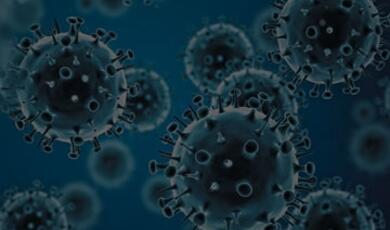Health and the Seven Ages of Man: Serious ill health in the very old and the very young
Share
- Details
- Text
- Audio
- Downloads
- Extra Reading
Shakespeare defined seven ages of man, and in his time death was no stranger in all of these groups; Shakespeare died in his early 50's.
Economic development and modern medicine have gradually squeezed life-threatening conditions to the extremes of life: the mewing infant in the developing world, and the seventh age in the developed world increasingly are where death and serious illness are concentrated.
Even in the last 15 years, the average age of onset of much life-changing illness in the UK has gone up significantly, and the average age of global childhood deaths has gone down with over 40% of under 5 year old deaths now in the first 28 days of life.
The lecture will explore why this reduction in deaths and serious disease in the period from early childhood to late old age has happened, and provide an initial exploration of what we can learn for future improvements.
Download Text
26 November 2014
Health and the Seven Ages of Man: Serious Ill Health in the Very Old and the Very Young
Professor Christopher Whitty
Until our generation death was a common visitor to any age in any socioeconomic group or class. Sir Thomas Gresham died around 60, Shakespeare at 52, Queen Anne, Pitt the Younger and Prince Albert in their 40s and Mozart at 35. Over the last 200 years average life expectancy in the world has risen from a situation where in 1800 many of the richest countries in the world had a life expectancy of under 40 years, to a convergence where the average life expectancy in richer countries is at or over 80 years, with citizens of the poorest dozen countries in the world having a life expectancy better than most of the richest countries a century ago.
Accompanying this has been a squeeze to the extremes in the age of mortality and ill health by age, with serious ill health increasingly being concentrated in the very young (first 28 days in the neonatal period) in the developing world and what would have been considered the very old elsewhere. Adolescent and young adult deaths, and more recently deaths in what might loosely be called late middle age have decreased sharply in richer countries over the last few decades.
In the developing world the major change has been a remarkable recent decline in child mortality. Childhood deaths remain a major preventable tragedy but they are significantly down almost everywhere in Asia and Latin America, and the continent where this trend was slowest to start, Africa is, in the words of The Economist, experiencing 'some of the biggest falls in child mortality ever seen, anywhere'. This has partly been due to economic growth. It also depended on a bold vision encapsulated by the Millennium Development Goals to reduce by 2/3rds under 5 childhood mortality globally, backed by well targeted science and great generosity in developing countries, richer countries and by philanthropists. A question we will come back to several times in this lecture series is: Has the bold vision, ambition and targeted science which led to remarkable improvements in child health globally been directed at the health of the very elderly in the developed world?
Reducing child deaths in the developing world. A great achievement of our generation depends on many small incremental advances.
Often when people aim to achieve dramatic improvements they look for a silver bullet- some new technology (say a vaccine) which is going to fix the problem once and for all. The recent remarkable reductions in under-5 mortality globally are due to multiple interventions with modest effects working together rather than one single fix- each one contributes small declines, but the combined impact of multiple small advances can be huge. The first is reductions in malnutrition. The strong correlation between poor nutrition and mortality includes protein-energy malnutrition but also specific deficiencies such as Vitamin A. Taking tackling Vitamin A deficiency is an example of a single limited risk factor for child mortality; attempts to reduce it involve multiple complementary interventions which add up to a major impact. These include better balanced diets, breeding in higher pro-Vitamin A levels into crops such as orange flesh sweet potato, fortifying staple foods, and emergency high dose Vitamin A during measles epidemics when lack of Vitamin A is highly associated with dying.
A second major reduction is serious insect-borne diseases, particularly malaria in Africa. Controlling these combines strong efforts to reduce transmission from mosquitoes, particularly through providing insecticide-treated bed nets, with significantly better diagnosis and treatment. The results have been impressive: since 2000 deaths from malaria, one of the great killers of children, have reduced by almost 50% (Fig 2).
Figure 2. Reductions in malaria deaths in children <5 2000-2012 (WHO World Malaria Report 2013).
Improvements in water and sanitation have occurred almost everywhere and underlie many major advances in childhood mortality. Alongside these there has been a major expansion of vaccinations leading to significant reductions in vaccine preventable deaths from childhood diseases such as measles, tetanus, meningococcus, diphtheria, pertussis (whooping cough) and polio. Although there is still some way to go on this (for example rotavirus and pneumococcal disease coverage is low) the impact of new vaccines and initiatives such as the GAVI vaccines alliance has been profound.
Whilst better prevention has played a major role better curative (medical) services have also led to reductions in mortality in children. These include more and better trained healthcare workers. There has also been a good output from investment in new drugs for malaria and neglected diseases (the UK government has played a major role in this along with, in particular, the Gates Foundation and the Wellcome Trust), better diagnostic tests and financing mechanisms such as the Global Fund to make treatments affordable. Each one of these leads to a modest, and sometimes even small, reduction in mortality but when combined the impact on childhood mortality has been extraordinary. Which elements are most important depends on which country we are talking about. So for example, in rural areas of Africa reductions in malaria deaths play a very significant role, whilst in Asia and Latin America interventions on diarrhoeal diseases and malnutrition will be more prominent but overall the trends in childhood deaths have been consistent and steadily downwards. This is likely to continue for at least for the next decade provided we do not lose focus on this issue.
Whilst deaths in children under the age of 5 have been dropping rapidly, deaths in the neonatal period have dropped, but much more slowly. The result is that neonatal deaths are becoming an increasing proportion of childhood mortality. In Africa around a third of all child deaths are now in the neonatal period (first 28 days of life) and in South Asia we have reached a situation where just over half of all childhood deaths occur in the first 28 days (Fig 3). Whilst the global burden of neonatal deaths are heavily skewed towards Africa and south Asia, there is room for improvement in the neonatal mortality everywhere and this will be the subject of the third lecture in this series.
Figure 3. From Liu et al, Lancet 2012.
The gradual disappearance of deaths young adults and middle age.
Whilst economic development and deliberate investment in preventive and curative health services and research have begun to squeeze the deaths in children right down to the first 28 days everywhere, significant improvements in adults, particularly middle aged adult mortality and morbidity have been occurring everywhere as well. In the developing world possibly the most striking reverse over the last decade is the decrease in mortality from HIV, now on a slow steady but probably inexorable retreat.
In the developed world we have gradually begun to move from a situation where people were highly disabled and then died from a single cause of mortality, or from diseases from a single risk factor (smoking), from the early 60s, to one where mortality is very heavily concentrated in those 80 and above. As single diseases have been tackled increasingly effectively, many more of those who die do so with multiple serious medical conditions often from multiple risk factors. Looking at standardised mortality rates (Fig 4) for the last 60 years there has been a steady but cumulatively considerable decline in deaths from circulatory diseases (heart disease and stroke).
Age-standardised mortality, England and Wales. ONS 2014.
There are many mutually reinforcing causes for this fall in cardiovascular disease. These include better diets, primary prevention in particular from reduced smoking but also reducing salt in diets, secondary prevention including treatment of hypertension and tertiary prevention including post-angina heart-protective drugs and in some cases surgery.
Progress from cancers has been more mixed with some important cancers such as lung disease seeing significant falls (mainly due to reductions in smoking) and deaths from some individual cancers such as stomach cancer, Hodgkin lymphoma or cervical cancer improving due to better prevention, screening or treatment. The net result has tended towards most cancers either presenting later in life or survival being improved.
The average age of mortality will continue to rise for the foreseeable future. This is a great development, but it has some significant consequences, not all of which are being tackled effectively. The likelihood that people will have more than one debilitating condition in their last few years of life will increase, and we need to plan for that now. Science has not served the old as well as it served the young; research has often deliberately excluded the elderly and seldom considers the interactions of multiple conditions, the norm for many elderly citizens. The economic and practical implications for delivering our health services are profound and it is doubtful the current delivery model of the NHS is capable of serving the health needs of the elderly population we will predictably have 30 years away. Throughout the world the demographic shift, including changes in dependency ratios, are going to lead to a need to change society and economies quite significantly (this will be the subject of the next talk in this series). There are also policy planning implications outside what is normally considered the health arena, for example on the projecting need for particular kinds of housing stock, transport and so on where we are currently making decisions which will have effects for many decades.
Reducing mortality is not the same as reducing disability. In many countries, including the UK, as the average age of life expectancy has gone up, healthy lives lost to disability has also increased. Whilst disability free years have got longer (people are becoming disabled at an older age) for every two years of life gained there may have only been one year of disability free life gained and the probability is that this trend will increase as we push median mortality further up into the 80s. It is important of course to be clear that disability and well-being are not the same thing and many very elderly people, including those objectively significantly disabled, have a sense of well-being that is at least as good as that in many fit young adults. If we wish however to translate the increasing longevity of the population into quality years in older life we will need significantly faster progress on issues such as dementia which will increase inexorably. Take dementia as an example of the areas where we know that without a currently unforeseeable scientific advance there will be a major increase in prevalence globally for all time. Progress has been very disappointing compared to the remarkable improvements which have led to reductions in mortality in children, in cardiovascular disease and in cancers of younger adults.
Is our level of ambition and strategic focus right for the very young and the very old? Our generation has seen remarkable drops in child mortality almost everywhere in the world. More needs to be done but with the will, tools and money and science already at our disposal this reduction in child mortality will continue and will be irreversible unless we give up. Neonatal mortality is reducing but has lagged and needs significant further work; there are early signs this may be happening. There is no doubt scientifically it can be achieved- all we now need to do is achieve it. I am confident that in the lifetime of almost all this audience we will have seen further, substantial reductions in neonatal mortality.
Arguably however the passion, vision, moral outrage, and scientific focus across the whole range of disease which has been shown in the attempt to reduce childhood mortality globally has not been replicated in the diseases of the elderly. Whilst child mortality is improving and we hope never likely return to the situation of 100 years ago, or even 10 years ago, preventable disability in the elderly is going to increase and is likely to continue to unless we actively choose to address it with some force.
There are difficult ethical questions associated with both neonatal and elderly health and society (through politics), and not doctors of scientists must answer them. There may be trade-offs between reducing neonatal mortality and increasing disability as more disabled children may survive. There will be trade-offs between maximising the age of death and maximising disability free years lived; these are linked but different strategic goals. Maximising quality of life is different again. Which is our primary goal is an important question. The easy period when the answer was: we want to do both equally, which is entirely possible to achieve in reducing disease in children and younger adults, is behind us.
Improving health at the two extremes of life presents two of the greatest challenges for our generation. In the developing world, if we manage to maintain improvements in child health, neonatal deaths will increasingly dominate as the major unmet need for child mortality- the path to meet it is visible. The richer world is converging on a situation where the great majority of people will live beyond their 70s. Maximising the health and quality of life of what historically would have been considered the very elderly is going to be a challenge for every society. Addressing this is going to require at least the same determination, imagination and science across multiple disciplines which has led to the remarkable reduction in child mortality.
© Professor Christopher Whitty, November 2014
Part of:
This event was on Wed, 26 Nov 2014
Support Gresham
Gresham College has offered an outstanding education to the public free of charge for over 400 years. Today, Gresham College plays an important role in fostering a love of learning and a greater understanding of ourselves and the world around us. Your donation will help to widen our reach and to broaden our audience, allowing more people to benefit from a high-quality education from some of the brightest minds.


 Login
Login







